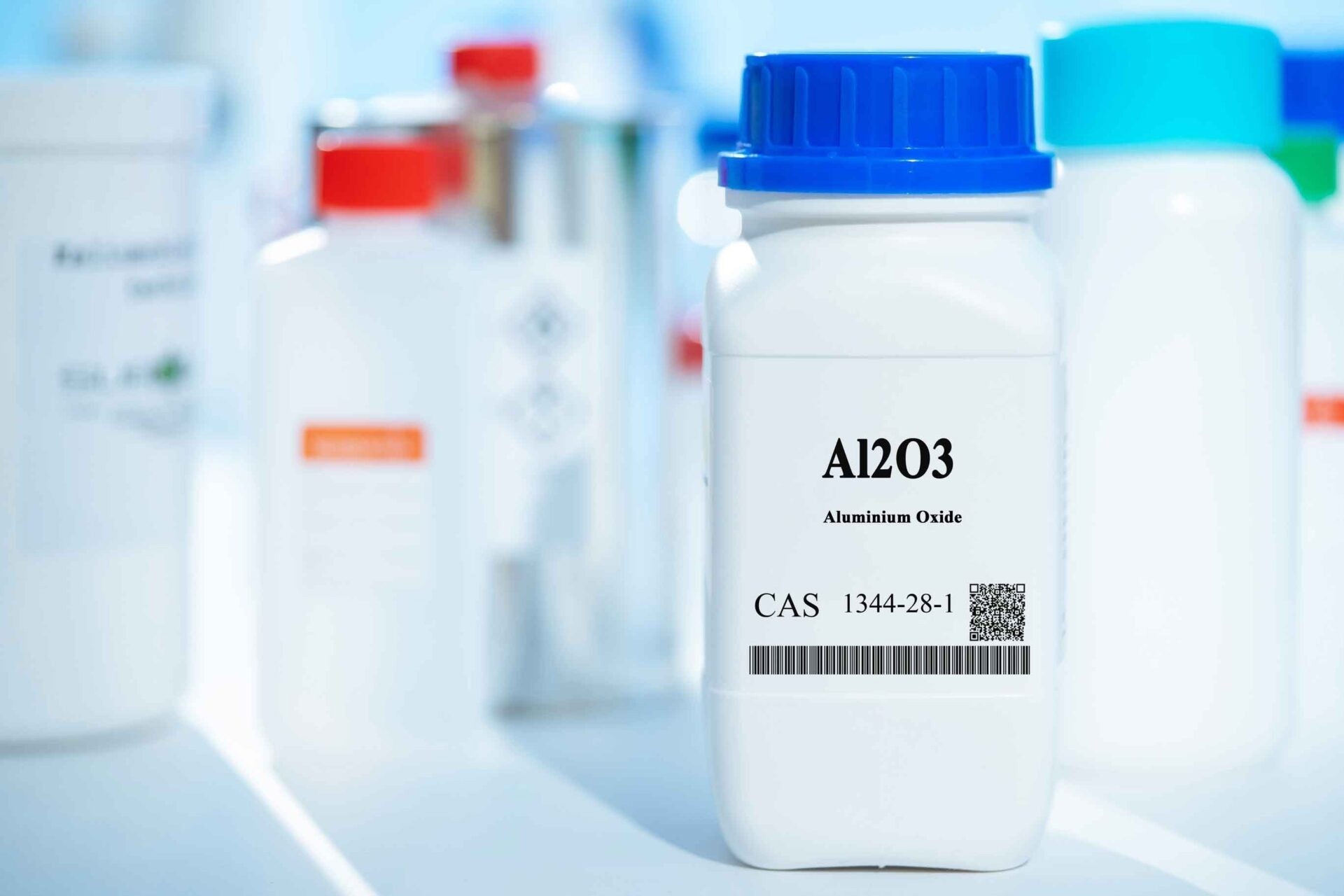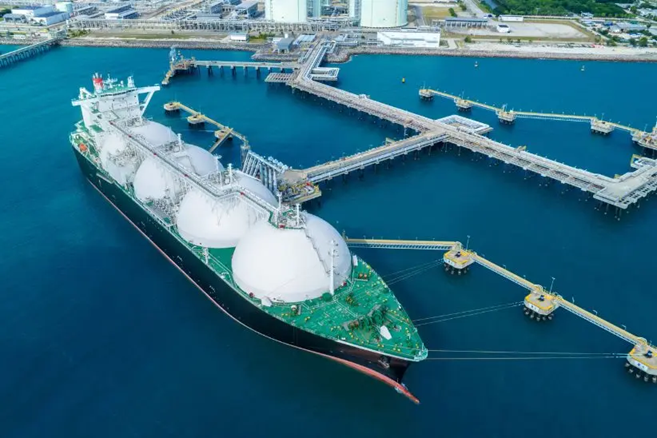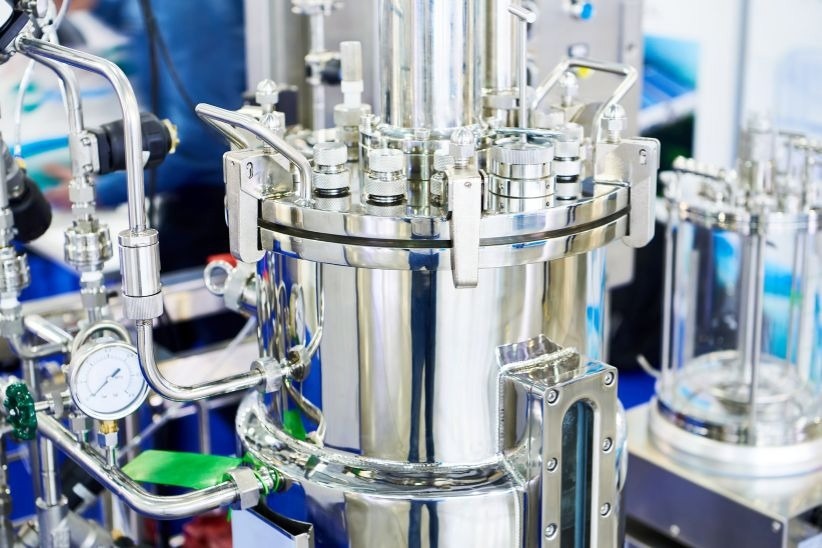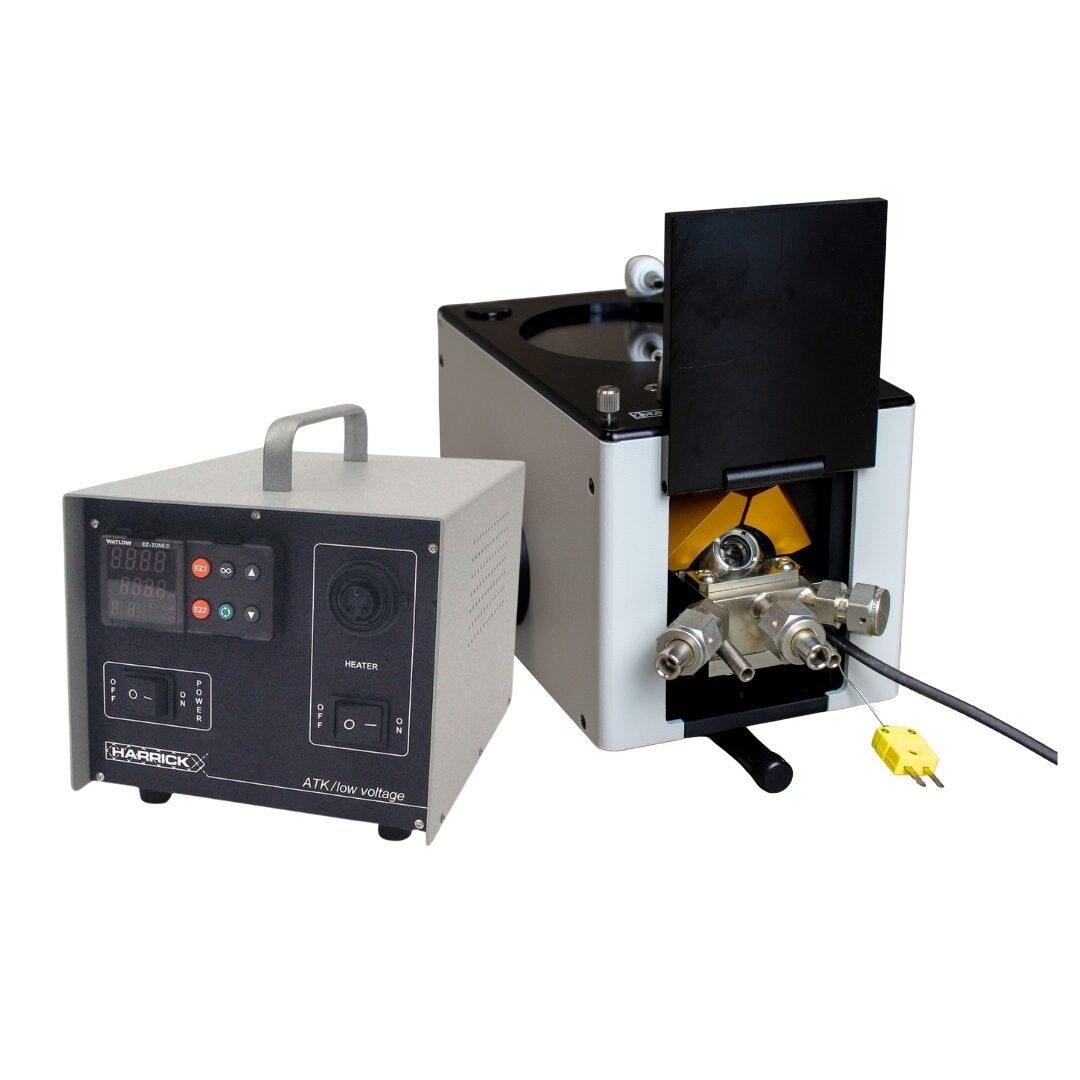Sponsored by Specac LtdReviewed by Maria OsipovaJun 20 2025
The petrochemical sector is close to a major transformation, whereby emissions once considered a burden have become the foundation for more efficient and cleaner fuels.

Image Credit: Specac Ltd
The industry is moving away from traditional, decades-old, historically profitable processes that have significantly contributed to global carbon emissions.
Increasing demand for sustainable alternatives, growing environmental awareness, and more stringent regulations have prompted a defining choice for the petrochemical sector: embrace innovative new technologies designed to turn carbon dioxide (CO2) into an asset rather than a liability, or continue down the well-worn path of carbon-intensive production.
Engineers and researchers have invested significant time in their search for viable solutions. The combination of advanced diffuse reflectance infrared Fourier transform spectroscopy (DRIFTS) and new developments in reverse water-gas shift (RWGS) catalysis now promises to make that dream a reality.
This article looks at a range of emerging research into new approaches to carbon utilization, supporting the more cost-effective and viable manufacture of sustainable fuels and other high-value products.
Understanding the Reverse Water-Gas Shift Reaction
The water-gas shift reaction converts carbon monoxide (CO) and water (H2O) into hydrogen (H2) and carbon dioxide (CO2). This process has been central to industrial H2 production for over 100 years.1
RWGS is the opposite of this process, converting CO2 and H2 into CO and H2O and attracting increasing attention due to its potential for use in carbon capture and utilization (CCU).2
The RWGS reaction can be adapted to generate syngas (CO + H2) from waste CO2 via post-reaction mixing or through the use of a high initial H2/CO2 ratio.3 This approach offers a valuable precursor for an array of petrochemical products, including ammonia methanol, and synthetic fuels.
However, RWGS is an endothermic process facing a series of recognized challenges, including energy costs and conversion efficiency.2
The Importance of RWGS
The RWGS process has the potential to revolutionize a range of industries via:
- The application of novel catalysts to enhance efficiency via faster reaction rates, therefore accelerating catalysis.
- The development of advanced formulations able to reduce deactivation and improve catalyst lifespan, ultimately lowering costs.
- The support of CCU to convert CO2 emissions into valuable feedstocks, ensuring a more positive environmental impact by contributing to climate change mitigation.
- The use of CO2 as a resource as opposed to a pollutant, valorizing waste, and promoting a more circular economy.
Recent developments in in situ analysis and catalyst design, most notably those utilizing the Harrick Praying Mantis™ range of products, have provided researchers with unprecedented catalyst surface interaction data and the ability to develop more efficient, robust, and high-performing catalysts.
These developments have extensive implications for the petrochemical sector and a wide range of other industries.
The RWGS Reaction is at the Forefront of an Industrial Revolution
Doubling Catalyst Lifespan for Methanol Synthesis
Methanol is a cornerstone of petrochemical production, with more than 100 million metric tons manufactured annually. Conventional approaches to methanol production are dependent on the use of copper, zinc oxide, and aluminium oxide (Cu/ZnO/Al2O3) catalysts due to their high catalytic activity and low cost. However, these materials are prone to rapid deactivation due to sintering.
Barrow et al. have shown it is possible to extend catalyst lifespan by nearly twofold by incorporating silicon as a structural promoter.4 This approach significantly improves process efficiency while reducing production costs, potentially facilitating increased use of CO2 as a primary raw material and ultimately enabling more sustainable and cost-effective methanol production.

Image Credit: Shutterstock
Efficiency Gains for Syngas and Fischer–Tropsch Applications
It is possible to use RWGS reactions to produce syngas, which is a key feedstock for the Fischer–Tropsch synthesis (FTS) of liquid hydrocarbons. In 2023, global syngas production was estimated to be 230 million normal cubic meters per hour (nm3/h)-enough to fill more than 90,000 Olympic-sized swimming pools per hour.
Market projections suggest syngas production will skyrocket, reaching 478 million nm3/h by 2030. These figures represent a compound annual growth rate (CAGR) of 11.3%.5
The FTS process is key to producing valuable chemicals and synthetic fuels, with its increasing demand primarily due to the growing importance of alternative fuels and the use of different feedstocks, including natural gas, coal, and biomass.6
Szamosvölgyi et al. recently looked into how catalyst composition influences CO2 activation pathways in RWGS reactions with a high H2/CO2 ratio (4:1).7 This research was done by leveraging the Harrick Praying Mantis™ Diffuse Reflection Accessory with BaF2 (Barium Fluoride) windows to perform precise in situ DRIFTS measurements.
This approach supported the development of Pt–Co nanoparticle catalysts, which demonstrated 2.6× higher CO2 consumption than conventional platinum-based alternatives. It was also observed that using novel catalysts improved CO selectivity while suppressing unwanted methane formation, supporting a more efficient carbon conversion pathway.

Image Credit: Specac Ltd
Nickel-Based Catalysts: A Step Change for Syngas Production
Noble metal catalysts such as palladium, rhodium, and platinum offer exceptional performance, but these catalysts are costly to use at scale. For example, the costs of platinum black catalysts begin at approximately $204 per gram.8
Researchers are continually exploring more cost-effective solutions for these costs. Nickel-based heterogeneous catalysts are a particular focus in this work, partly due to their considerably lower cost of between $5 and $100 per kilogram, depending on the specific application and formulation.9
Lin et al. recently investigated the potential use of methanation-resistant nickel catalysts as an efficient, affordable option for RWGS applications.10 This research used Harrick’s Praying Mantis™ Diffuse Reflection Accessory in a DRIFTS setup to perform the real-time analysis of CO2 activation pathways and catalyst surface interactions.
Nickel-based catalysts synthesized via the molten salt method achieved an impressive 49% CO2 conversion at 500 °C with near-exclusive CO selectivity. This was due to the suppression of methanation prompting competing conversion of CO2 to methane in the presence of H2.
These results highlight the practical and economic benefits of nickel-based catalysts. They showcase their capacity to rival noble metals in terms of RWGS performance while also considerably reducing costs.
A 100-hour durability test was also performed, confirming that these catalysts are less prone to deactivation via coke formation.10 This is an often-encountered problem in industrial applications.
Low-Energy CO2 Valorization with Iron Catalysts
Conventional RWGS reactions necessitate the use of temperatures above 700 °C, meaning that large-scale CO2 conversion is energy-intensive and challenging in terms of catalyst stability.2
Recent research from Yamaoka et al. revealed that iron-based catalysts under an electric field can achieve almost 100% CO selectivity at 150 °C, however, notably reducing the energy requirements associated with this process.11
Using a fixed-bed flow reactor with an applied direct current electric field, the researchers discovered that iron-supported catalysts could achieve improved CO2 conversion while reducing methanation.
The electric field also seemed to play a role beyond simple heating, reducing the reaction’s activation energy. The most active iron-based catalyst offered consistent performance over three days with start-up and shutdown operations when the RWGS reaction was run for 8.5 hours per day. These findings highlight this catalyst’s potential as a scalable, cost-effective alternative to noble metal-based systems.
These developments are expected to pave the way for a range of innovative new low-energy CCU technologies, with RWGS processes set to underpin developments in sustainable synthetic fuel and syngas production.

Image Credit: Specac Ltd
The Impact of RWGS Beyond Petrochemicals
RWGS catalysis is regularly used beyond the petrochemical field, playing a pivotal role in applications such as hydrogen economy integration, ammonia synthesis, and waste valorization.
As industries continue to decarbonize their operations, RWGS reactions are anticipated to be central to innovation across diverse sectors, facilitating the development of alternative fuels, low-carbon fertilizers, and more.

Praying Mantis™ Diffuse Reflection Catalysis Package: Praying Mantis Diffuse Reflectance Accessory + High Temperature, Standard Pressure Reaction Chamber + Temperature Controller.”Image Credit: Specac Ltd
Facilitating Breakthroughs in In Situ Catalyst Analysis
The potential success of these innovations depends on the precise characterization and optimization of catalysts. DRIFTS accessories like the Praying Mantis™ and its range of related instruments will be key to researchers’ ability to study active site dynamics, catalyst surface interactions, and real-time reaction mechanisms in detail.7,10
These instruments support:
- The development of longer-lasting catalysts via structural stabilization
- The optimization of reaction pathways to maximize CO selectivity
- The in-depth analysis of catalyst deactivation to enhance industrial-scale performance
In situ analysis continues to facilitate innovations in RWGS catalysis that are expected to underpin the transformation of petrochemical processing and a diverse array of other applications, from syngas refinement and methanol production to waste valorization and hydrogen economy integration.
The ongoing application of advanced DRIFTS techniques is unlocking new levels of sustainability and efficiency, with quality control managers and R&D leads able to leverage these tools to improve efficiency, lower operational costs, and implement more sustainable process footprints.
Industries’ ability to adapt to these pioneering new developments will be key to their success.
References and Further Reading
- Ambrosi, A. and Denmark, S.E. (2016). Harnessing the Power of the Water-Gas Shift Reaction for Organic Synthesis. Angewandte Chemie (International ed. in English), (online) 55(40), pp.12164–89. https://doi.org/10.1002/anie.201601803.
- Louise, M., et al. (2024). Transforming CO2 to valuable feedstocks: Emerging catalytic and technological advances for the reverse water gas shift reaction. Chemical Engineering Journal, 487, pp.150369–150369. https://doi.org/10.1016/j.cej.2024.150369.
- Bown, R.M., et al. (2021). Identifying Commercial Opportunities for the Reverse Water Gas Shift Reaction. Energy Technology, p.2100554. https://doi.org/10.1002/ente.202100554.
- Barrow, N., et al. (2024). Doubling the life of Cu/ZnO methanol synthesis catalysts via use of Si as a structural promoter to inhibit sintering. Science advances, (online) 10(3). https://doi.org/10.1126/sciadv.adk2081.
- Grand View Research. Syngas Market Size, Share, Growth & Trends Report, 2030. (online) Available at: https://www.grandviewresearch.com/industry-analysis/syngas-market-report.
- Chai, J., et al. (2023). Recent Mechanistic Understanding of Fischer-Tropsch Synthesis on Fe-Carbide. Catalysts, 13(7), pp.1052–1052. https://doi.org/10.3390/catal13071052.
- Szamosvölgyi, Á., et al. (2024). Optimized Pt–Co Alloy Nanoparticles for Reverse Water–Gas Shift Activation of CO2. ACS Applied Nano Materials, 7(9), pp.9968–9977. https://doi.org/10.1021/acsanm.4c00111.
- Fuel Cell Store. Platinum Catalyst. (online) Available at: https://www.fuelcellstore.com/platinum-black.
- Made-in-China. Nickel Catalyst Price - Buy Cheap Nickel Catalyst At Low Price On Made-in-China.com. (online) Available at: https://www.made-in-china.com/price/nickel-catalyst-price.html.
- Lin, Y.-C., et al. (2024). Crafting a Methanation-Resistant, Reverse Water–Gas Shift-Active Nickel Catalyst with Significant Nanoparticle Dimensions Using the Molten Salt Approach. ACS Sustainable Chemistry & Engineering, 12(40), pp.14771–14783. https://doi.org/10.1021/acssuschemeng.4c05125.
- Yamaoka, M., et al. (2024). Efficient reverse water gas shift reaction at low temperatures over an iron supported catalyst under an electric field. Scientific Reports, 14(1). https://doi.org/10.1038/s41598-024-61017-2.
This information has been sourced, reviewed and adapted from materials provided by Specac Ltd.
For more information on this source, please visit Specac Ltd.